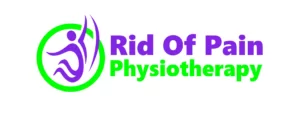Causes of Back pain in females
Back pain is the most common problem nowadays. Approx. 30-40 per cent population experience back pain in their lives but females are more prone as compared to males.
There are multiple reasons for back pain in females but a few specific reasons are related to females only like hormonal imbalance.
Let’s take a look at the possible causes of lower back pain in women.
Back Pain Causes, Females:
There are several reasons for back pain as the spine, supporting muscles and ligaments or referred pain.
Pain may be localized pain or radiating pain in the legs. Various reasons for back pain can be:
- Back sprain or strain
- Nerve compression
- Diseases like osteoporosis and disc disease
- Arthritis/degenerative changes
- Kidney/ stomach diseases
- Hormone imbalance
- Mental health like anxiety/ stress
- Postural problems
- Lack of rest/ exertion
- Fibromyalgia
- pregnancy
Out of all few problems are specifically related to females only.
Muscle strain
A muscle or ligament strain can also cause back pain. It may happen due to lifting heavy weight, bending in an awkward position, twisting movements, and overstretching of muscle. Females are more prone to muscle strain/ sprain as they are burdened with home and office work. Forward bending and lifting of heavy weight cause nerve compression too which gives radiculopathy or leg pain. It may also cause numbness or weakness in the legs.
Kidney and stomach disease
Kidney and stomach diseases also cause back pain like stones, any urine infection, constipation etc.
Hormonal imbalance
- PMS(premenstrual syndrome):
It is a condition many women get before their periods. During this time females feel back pain, leg pain, pain in the gluteal region, cramps in their stomach, headache, fatigue, bloating mood swings lethargy, anxiety, food craving etc.
PMS starts a few days before the menstrual cycle and ends within a day or two after the start of the menstrual cycle.
- Endometriosis
Endometriosis is a disorder in which endometrial tissue, which borders the uterus, develops outside the uterus.
Endometriosis is a condition in which tissue grows on the ovaries, fallopian tubes, and other pelvic tissues. It may even form around the intestines and urinary tract.
The major symptom is pain in the back, menstrual cramps, pain during sex or after sex, pain during urination in periods, and diarrhoea during the menstrual cycle.
It can make it difficult to start a pregnancy.
- Dysmenorrhea
Very painful menstruation is called dysmenorrhea. It gives severe pain in a few females but is a manageable condition. It is more likely to happen in Girls under the age of 20, smokers and the females who have heavy bleeding during periods, endometriosis, fibroid in the uterus, pelvic inflammatory disease
- Post menopause
Spinal disc degeneration accelerates due to declining oestrogen levels post-menopause. Degeneration can cause herniation of the disc. A herniated disc can also be caused by an injury.
If you want to consult Best Female Physiotherapist and Get a personalized prescription for the causes of back pain in females then Click Here to book an online consultation with Dr Neetu Rathi.
Osteoporosis and degenerative disease
Osteoporosis causes bones to become weak and brittle — so brittle that a fall or even mild stresses such as bending over or coughing can cause a fracture or back pain. Osteoporosis is more common in females due to hormonal changes.
After Menopause women are prone to develop osteoporosis if they are deficient in calcium.
Females are also prone to develop a degenerative diseases like arthritis too with the progression of age. They suffer more from knee pain and back pain.
Pregnancy
During pregnancy back pain is common. It happens due to shifting of the centre of gravity, weight gain and relaxation of ligaments due to the release of the hormone relaxin. It may be severe if a female has a history of back pain before pregnancy. It may radiate to the legs also.
Postural problems also develop during pregnancy like hyperlordosis or kyphosis or both and the females having this problem are also prone to develop back pain.
In the case of caesarean delivery, females suffer from weak abdominal muscles which causes back pain. Spinal injections are also a causing factor of back pain too.
Fibromyalgia
Fibromyalgia is a long-term condition that causes pain throughout the body, but more in the spine.
People with the condition have a heightened sensitivity to pain and discomfort, but individual symptoms will vary from person to person. there is no exact cause of fibromyalgia.
Back Pain Prevention:
Below are some of the best steps to stop back pain in females, remember the below-mentioned steps and preventive measures are applicable for men as well so read them carefully and start implementing them to reduce back pain and prevent back pain in females and men.
By improving your physical condition and understanding and practising good body mechanics, you may be able to avoid or prevent back discomfort.
To keep your back healthy and strong:
- Regular low-intensity exercises— those that don’t strain your back — these flexibility exercises maintain the flexibility of your back and allow your muscles to function better. Walking, stretching and swimming are good choices.
Strengthening exercises: Abdominal and back muscle exercises, which strengthen your core, help condition these muscles so that they work together like a natural corset for your back.
- Weight management: Being overweight strains back muscles. If you’re overweight, reduce weight to prevent back pain.
- Quit smoking. Smoking increases your risk of low back pain. Because the risk rises with the number of cigarettes smoked each day, stopping should help lower it.
- Healthy diet: take a healthy diet which includes protein and dietary fibres. A healthy diet reduces the chance of deficiency of nutrients. Also, add supplements if needed. Improve water intake to reduce stiffness and maintain lubrication of joints.
Avoid movements that twist or strain your back. Use your body properly:
- Stand smart: Don’t slouch. Maintain a neutral pelvic position. If you must stand for long periods, place one foot on a low footstool to take off load from your lower back with the alternate leg. Good posture can reduce the stress on back muscles.
- Sit smart: Choose a seat with good lower back support and armrests. Place a small pillow or cushion in the lower back to maintain the normal curve. Keep your knees and hips at the same level. Alter your position at least once every half-hour.
- Lift smart: Avoid heavy lifting, If at all possible, avoid heavy lifting; nevertheless, if you must, let your legs perform the heavy lifting.
- Sleeping: sleep on a bed which maintains the normal curves of the spine. It should not be too soft or too hard. Choose according to your comfort. Try to sleep on the sides. Avoid sleeping prone. Use a thin pillow under the neck.





Thanks for sharing. I read many of your blog posts, cool, your blog is very good.